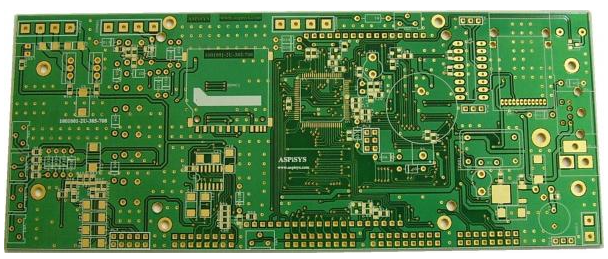The dielectric constant (Dk) or relative dielectric constant of the material of the PCB circuit board is not a constant constant-although it looks like a constant from its name. For example, the Dk of a material will vary with frequency. Similarly, if different Dk test methods are used on the same material, different Dk values may also be measured, even if these test methods are accurate. As circuit board materials are increasingly used in millimeter wave frequencies, such as 5G and advanced driving assistance systems, it is very important to understand the variation of Dk with frequency and which Dk test method is "appropriate".
Although organizations such as IEEE and IPC have dedicated committees to discuss this issue, there is currently no standard industry test method to measure the Dk of circuit board materials at millimeter wave frequencies. This is not because of the lack of measurement methods. In fact, a reference paper published by Chenetal.1 et al. described more than 80 methods for testing Dk. However, no one method is ideal. Each method has its advantages and disadvantages, especially in the frequency range of 30 to 300 GHz.
Circuit test vs. raw material test

There are usually two main types of test methods used to determine the Dk or Df (loss tangent or tanδ) of circuit board materials: raw material measurement, or measurement in a circuit made of materials. Raw material-based testing relies on high-quality and reliable test fixtures and equipment, and Dk and Df values can be obtained by directly testing raw materials. Circuit-based testing usually uses common circuits and extracts material parameters from circuit performance, such as measuring the center frequency or frequency response of a resonator. Raw material testing methods usually introduce uncertainties related to test fixtures or test devices, while circuit testing methods include uncertainties from test circuit design and processing technology. Because these two methods are different, the measurement results and accuracy levels are usually inconsistent.
For example, the X-band clamped stripline test method defined by IPC is a raw material test method, and the result cannot be consistent with the Dk result of the circuit test of the same material. The clamping type stripline raw material testing method is to clamp two pieces of material under test (MUT) in a special test fixture to construct a stripline resonator. There will be air between the material under test (MUT) and the thin resonator circuit in the test fixture, and the presence of air will reduce the measured Dk. If the circuit test is performed on the same circuit board material, the measured Dk is different from that of no entrained air. For the material of the high-frequency circuit board whose Dk tolerance is ±0.050 determined by the raw material test, the circuit test will get a tolerance of about ±0.075.
The circuit board material is anisotropic and usually has different Dk values on the three material axes. The Dk value usually has a small difference between the x-axis and the y-axis, so for most high-frequency materials, Dk anisotropy usually refers to the Dk comparison between the z-axis and the x-y plane. Due to the anisotropy of the material, for the same material under test (MUT), the measured Dk on the z-axis is different from the Dk on the xy plane, although the test method and the measured Dk value are both "correct" .
The type of circuit used for circuit testing also affects the value of Dk under test. Generally, two types of test circuits are used: resonant structure and transmission/reflection structure. Resonant structures usually provide narrowband results, while transmission/reflection tests usually provide broadband results. The method of using a resonant structure is generally more accurate.